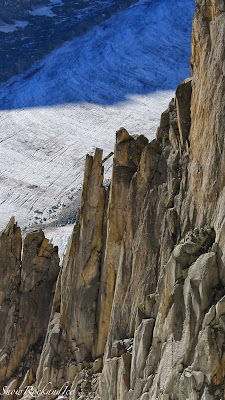It’s ice climbing season and its time to dust the sharp
things off. I have already gotten out a
couple days in the Salt Lake area and have gotten a chance to play on my Petzl
Lynx crampons. While these are not a new
product, they were new to me last season and I had many good days to test them
out. To be honest, I am still relatively
new to ice climbing and I definitely take advantage of any advances in
gear. I have to say, these crampons have truly helped me take my ice climbing skills to the next level and my
confidence has increased as a result of these new toys.
Aside from their excellent performance these crampons also
excel in a number of different ways. The
number one reason to purchase these crampons is their versatility. The crampons can be modified with just one
screw to be in dual point mode in short, long or asymmetrical position or
mono-point mode in short or long position.
Personally, I use them in dual point mode in the long position and find
that they work great in the WI 3- 5 range.
Additionally, these crampons can fit boots with or without toe welts as
the front bindings are interchangeable between a stainless steel toe bail for
boots with toe welts and a flexible binding for boots without toe welts. All you need is a boot with a heel welt as
the rear binding is the super smooth leverlock hail bail, which is also
height-adjustable. I primarily use them
on the La Sportiva Nepal Evo in a size 39.5 and they fit perfect.
Other great features include front and rear antisnow plates
to prevent snow build-up and an easy to adjust bar to help facilitate
adjustment. At 14 points, these crampons
feel extra secure while on the sharp-end.
The Petzl Lynx weigh in at 1080 g (2.4 lbs) and are lighter than similar
models like the Black Diamond Cyborg.
On the downside, these crampons are not cheap and cost
$245. But given that you are essentially
getting two-plus crampons in one actual crampon, some people may consider it a
bargin!
Bottom Line: These
are the crampons for you if you want performance and versatility. Now lets go
climbing!








































